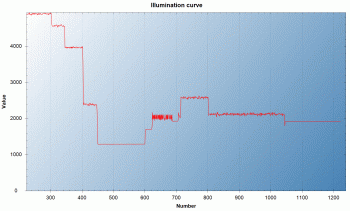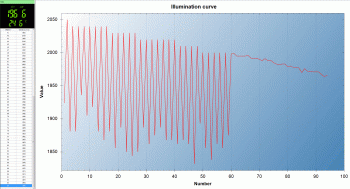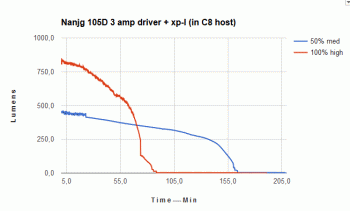You can run some apps as an older version of windows if that helps. When you right click on a program with windows 8 and up it has a compatibility tab. Even if it just powers from the USB but saves the data the machine it helps i guess.
I bought one… I’ll report once I get it. Hopefully not a $20 paperweight.
Got mine of us eBay
The GM1020 sample I have seems to be quite accurate with LEDs. At least compared to my spectrophotometer. But as always with these Chinese wonders YMMV.
Nice find EDSG!
I’ve got an Extech that is data logging but can’t run the software because I need the OSX version, not Windows.
And on that note, if the bundled software turns out to be junk you might try running the Extech software and see if it would work with this meter. I have absolutely no idea if the protocol is the same, but might be worth a shot. The software and cable are around $70 so I wouldn’t suggest buying it, but you might have a fellow flashlight enthusiast in the states that would be willing to send you a copy of the Extech software to try ![]()
-Michael
Got mine today. Just gotta figure out how to run this bad boy. Instructions are sparse!
Update.
Installed very easy. Had to update driver for Windows 10, but was super easy to do.
There is a hefty .PDF instruction book on the CD.
Its 2am so I only played for a few min.
Looks like you can export data to .xls for making charts. You can record to device, or record live on your computer via USB.
Software is very rudimentary. It shows a graph, but you can’t export or modify it.
I’m still messing with it, but I will update you more tomorrow. I need to log some data and see how it looks in spreadsheet.
My initial impression is that this is going to be a very good entry level meter. The software is pretty much just a way to record live or import the data to your computer
Cool mate thanks I will buy one soon.
Bought an UNI-T UT382 recently and their software doesn't support newer Windows.![]() I'm thinking of giving this meter a chance.
I'm thinking of giving this meter a chance.
Just a heads up that I haven’t been able to get this meter to work on any of my Windows 10 machines. Even with the newer drivers downloaded from Profilic.
I just made my order... :FACEPALM:
I would be expecting the drivers to be bad like when i programmed my Baofeng radios so many driver issues
Is the usb to serial device showing up in your devices?
My first install attempt It didn’t work and I went into my devices and the usb to serial wasn’t there.
Used the driver app to “uninstall completely” then tried again and it worked. Had to restart windows for the software to pick it up and connect.
Also it looks like the last driver update was 2 months ago
Here’s what mine does.
Tried everything with the newest driver and having the meter on when plugging in etc.
That’s exactly what mine did.
Use the driver again. Do the complete uninstall. Restart comp. Install driver again. Then restart comp again before you try.
Very important to restart comp before and aftrr
Where did you d/l the latest drivers from
No amount of uninstalling or restarting helps mine.
Nice find! I will follow this thread and order one if it will have positive feedback from you guys.
Has anyone tried using the Python script linked in the CPF thread?
-Michael
Ok. Update.
The driver software is definitely a prob. I’ve had to reinstall it a few times.
What seems to work is leaving the meter plugged into usb but power off when you install. It looks like the auto play when you connect it has the ability to corrupt the driver.
Either way. Its a huge pain! Fyi.
I ran a test run on the lumintop tool and exported to xls. The light curve was the same shape as my previous method and other reviews so the meter is somewhat accurate.
Problem is it only exports lux data, and since the sampling rate is 2x per second you can’t make a chart with a push of a button.
Also seems like the first few recorded lux values are always wrong.
So the driver is definitely buggy, and your data set is going to be in 1/2 seconds.
Which can be a huge pain if your doing a 7 hour run. Which can mean like 40,000 data points.
Also finding runtime means doing some light math
I got one of these too… and there’s two problems:
- After recording 7200 values (about an hour) the supplied pc software just deletes all recorded data and starts over!
I didn’t find any options to change this so I guess it’s a bug in the software. So I just use the device memory.
- Quite a lot of noise in the signal. Big noise over 20k lux, and smaller noise over 2000 lux.
Here is graph I recorded from my Olight S20, just moving it further and closer to my diy integrating sphere.
! !
!
Here’s a closeup of the moment when the light intensity goes below 2000 lux (=41 lumens in my sphere)
! !
!
The above kind of transition would be hard to average out. If somebody knows how to get rid of this “noise”, I’m listening.
Here’s a finalized runtime graph, from google spreadsheet. you can see the bigger noise component, which disappears below 20 000 lux.
! !
!